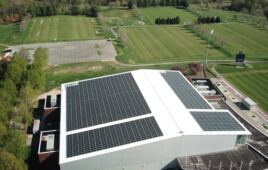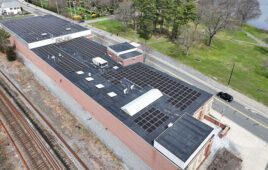Research group Wood Mackenzie has released an updated U.S. solar forecast after the Biden Administration issued an Executive Order (EO) announcing a two-year delay on AD/CVD tariffs by the Dept. of Commerce. WoodMac had been predicting a 6.3-GW reduction in 2022 installations based on the uncertainty around the anticircumvention investigation launched by the DOC in March. While the two-year pause on tariffs is expected to bring some relief to the solar industry, WoodMac said the impact will vary across all segments.
Most (around 85%) US utility-scale projects rely on imported modules from the four named countries in the anticircumvention investigation. When the investigation started, module manufacturers heavily reduced production in Southeast Asia, as most of their supply is directed to the United States. The EO led some major manufacturers to restart that production.
Some suppliers expect to ship modules to the United States as early as the end of Q3. While the EO has brought some certainty to the question of new AD/CVD tariffs, the industry now faces uncertainty around the implementation of the Uyghur Forced Labor Protection Act (UFLPA). Enforcement of this new law could severely constrain module imports to the United States.
On the demand side, developers have expressed that tax equity investors still view the potential tariff implementation as a risk – despite the two-year pause. Since solar project financing will still be considered high-risk until the DOC announces a final determination, developers will continue to see high costs of capital and high barriers to entry, WoodMac said.
The effect of the investigation was exponential. Weeks of inactivity have resulted in months of delays. EPC firms have already started reallocating machinery and personnel to non-energy projects, resulting in exacerbated labor shortages for near-term projects. Since a high volume of projects has already been pushed to 2023 or later, there’s a low probability that many will be renegotiated to 2022. Considering potential module availability and contract renegotiations, WoodMac estimates 30 to 40% of the capacity delayed to 2023 and 2024 will materialize sooner.
All these factors considered, WoodMac expects a modest upside of 1.5 GW (17%) to utility-scale solar in 2022, but higher upside potential of 3 GW (18%) in 2023.
Similar to utility-scale solar, most commercial solar module supply (about 80%) comes from the four Southeast Asian countries subject to the AD/CVD investigation. The EO will help developers secure modules throughout the rest of the year. Some of these modules might make it into projects in 2022, but it’s more likely that those shipped during the remainder of the year will be part of projects coming online in 2023.
As a result, WoodMac predicts some modest upside in 2022 (approximately 100 MW) and more upside to installations in 2023 (around 500 MW), as delayed projects come online.
The biggest impact of the EO on residential solar will be in changes to the competitive landscape. Prior to the EO, WoodMac predicted that smaller local installers without established equipment vendor relationships would find it difficult to get equipment during the AD/CVD investigation uncertainty. Demand from these installers would be fulfilled by larger installers. Since residential solar demand continues to be strong, WoodMac expected only very minor impacts from the investigation, which would be more than outweighed by recent delays to California’s net energy metering (NEM) 3.0 proceeding.
Therefore, the EO doesn’t change WoodMac’s view on residential solar installations. But it does mean that smaller local installers should fare better in the next few months.
News item from Sylvia Leyva Martinez, senior analyst, North America utility-scale solar; and Michelle Davis, principal analyst, solar; of Wood Mackenzie





Tell Us What You Think!